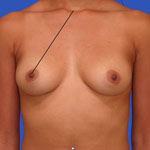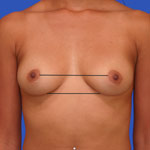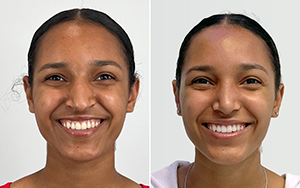Breast Lift Consultation
Breast Lift Consultation and Physical Exam
We have outlined below what you can expect from your breast lift consultation with Joseph T Cruise, MD. Read carefully, as there are many suggestions that will save you time, clear up questions, and help you convey to Joseph T Cruise, MD what you want to accomplish
Health History
All cosmetic surgery consultations begin with a thorough health history. This is especially true if general anesthesia is being used, but also applies to local anesthesia. Breast augmentations are usually done under general anesthesia. Rarely, if the implant is placed above the muscle, local anesthesia can be utilized. Prior to meeting with Joseph T Cruise, MD you will be given a health history questionnaire to fill out in the waiting area. There are five areas of your health you will be asked about. Be sure to answer it with detail so that your surgery and anesthesia can be optimized for you.
General Health
General health problems are important to discuss so that your surgery is as safe as possible. Be sure to mention any chronic illness. Of particular concern are: high blood pressure, diabetes, heart problems, liver and kidney disease, stroke, cancer, bleeding problems, and wound healing problems.
What will Joseph T Cruise, MD do if I have medical problems?
In short, he will make sure your health is optimized as much as possible to ensure your safety. This may mean referring you to your private physician.
If you have a health problem or are over 50 years of age you can often save yourself time by getting a letter from your private physician prior to your cosmetic consultation stating what the health problem is, how it is being treated, and whether or not you are able to tolerate general anesthesia safely.
If you are seeing any specialist (cardiologist, kidney doctor, psychiatrist, etc.) be sure to bring a letter from them stating that you are able to tolerate surgery.
If you are not able to tolerate general anesthesia it may be possible for your breast lift and augmentation to be done under local anesthesia if the implant is placed above the muscle. This must be discussed with Joseph T Cruise, MD.
Be sure to let Joseph T Cruise, MD know if you have ever had a blood clot.
Past Surgical History
On your questionnaire you will be asked about previous surgeries. Be sure to identify any problems you may have had with anesthesia. Of particular concern are previous cosmetic surgeries especially if you do not like the result and are interested in revision. With breast augmentation it is especially important to mention all breast surgeries including breast biopsies.
Medications
Be sure to list all medications you take including aspirin and over-the-counter medications. These are important as they may increase bleeding and affect your surgery. It is extremely important to stop taking aspirin and aspirin containing products at least 10 days before surgery. Tylenol is a good alternative. Here is a partial list of aspirin containing products and other products to be avoided prior to surgery.
Allergies to Medications
Information about medications that cause allergies is very important so that these medications can be avoided. Of particular importance is the reaction you had, especially if you had trouble breathing. Be sure to include this information. Nausea is not an allergy but it is important to mention as well.
Smoking, Drinking and Drug Use
These three will certainly affect your surgery and MUST be mentioned so that your surgery can be optimized. Smoking causes a profound decrease in wound healing and will lead to worse scarring and a less favorable result. With large procedures such as a face lift, neck lift, tummy tuck, and breast lift smoking must be stopped at least 6 weeks before and after surgery. Otherwise, the results could be disastrous leading to non-healing wounds, poor scarring, and/or infection. With smaller procedures such as eyelid surgery, nose surgery, breast augmentation, and liposuction smoking will hurt the overall result but this may or may not be noticeable. In this case smoking cessation is strongly advised but is not mandatory.
Specific Breast Issues
During your consultation you must be very accurate with breast problems. Of particular concern is a history of breast masses and/or breast cancer. If you are over the age of 40 your plastic surgeon will require that you have a mammogram. Bring the results with you to your consultation so it can be documented. If you or a family member has a history of breast cancer than this age may be moved up to 35 or even 30. Breast lifting with or without augmentation has no effect on breast cancer. The only potential problem is mammogram screening. Mammograms are harder to read when there is an implant or if you have had previous breast surgery. This problem is minimized by taking special mammogram views called Eckland views. Eckland views show the breast tissue in multiple planes to try and see around the implant. It works very well but there still is a small (less than 10 per cent) amount of breast tissue that remains unseen. Mammograms work better when the implant is placed under the muscle if an implant is used in conjunction with the lift. This allows better visualization.
Physical Exam of the Breasts
Height, Weight, and Bra Size
Typically, your exam will begin with your height, weight, and bra size. You should be as accurate as possible. If you have been pregnant or have had a significant weight change be sure to let your plastic surgeon know.
Regarding breast size, tell your plastic surgeon what you would like to be. For example, I am a 34 B and would like to be a 34 B but with the breasts lifted. Or, I am a 34 B and would like to be a 34 D with my breasts lifted. While cup sizes are highly variable depending on manufacturer, this does give the plastic surgeon an idea of what you are looking for.
Observation
The second part of the exam involves evaluating the breasts for size, shape, and symmetry. It should be pointed out that all breasts are asymmetrical. Some are extremely asymmetrical while others have only minimal differences. If a woman has breast fed, it is not uncommon for the breast used the most to sag more than the other. These asymmetries will be markedly improved but perfect symmetry is unrealistic.
Common causes of asymmetry include size differences, sagginess, nipple location, areola size and shape, scoliosis, chest wall asymmetries. This asymmetry can be addressed during the breast lift procedure.
Palpation for masses
Typically, your plastic surgeon will perform a quick breast exam. Monthly, self exams are extremely important and are, far and away, the best way to catch early cancers that are easily treatable.
Measurements
Most plastic surgeons will take measurements. Most will take pictures; others will directly measure and write everything down.
Here are the most important measurements.
| Distance from sternal notch to nipple
This distance determines sagginess of the nipple. Normal distances are less than 21-22 cm. Over 21 cm usually means there is some component of sag. Minor sag such as 21-24 cm can be corrected with augmentation alone but anything more usually needs some type of breast lift in conjunction. See the section on Breast Augmentation for more information. |

Distance from areola to infra mammary fold (IMF)
This distance determines if there is a bottoming-out of the breast. It increases as the breast tissue falls downward. Typical lengths are less than 6 cm in the youthful breast but may be longer in large breasts and still be acceptable.
| Relationship of nipple to infra-mammary fold (IMF)
This is, perhaps, the most important measurement. It determines whether the nipple is on top of the breast or has fallen. The ideal breast has a conical shape with the nipple on the top. The nipple should be at least 3 cm above the IMF. When the nipple falls below the IMF it should be lifted. Nipples that are at the same level as the IMF may potentially be corrected by augmentation alone. This must be determined by your plastic surgeon. |

Width of breast
This measurement is important in determining the maximal size of implant that will fit on the chest wall if an augmentation is also going to be done. This measurement can be anywhere from 11 cm to over 16 cm.
Separation of breasts
This is the distance between the breasts. Most people relate it to cleavage but cleavage also is dependent on breast size as well. Typical separation is about 3 cm. This distance does not normally change significantly with a breast lift unless an augmentation is also performed. It can be made closer by elevating the pectoralis major muscle along its medial border. Point this out to your plastic surgeon if this is important to you.
Areola size
The areola is the colored area around the nipple. It often enlarges after pregnancy as well as changes shape. Ideal areola size is subjective. Areola reduction is often done at the same time as breast lifting.
Joseph T Cruise, MD's Breast Lift /Mastopexy Information Resource is provided for prospective patients considering breast surgery in Southern California, including Orange County, Los Angeles, Newport Beach, San Diego, and Beverly Hills.





